
Functional model. In the previous section we used labels to categorize the kinship terms by their linguistic function. These light blue labels also appear in figure 1. They are the terminal categories that appear in the phrase structure rules that use the Backus-Naur form designed to describe their linguistic function.

The first rule reflects the first rule of the last section and allows the term to be as long as needed to express the meaning of a kinship chain of any length. The purpose of the first term “boundary” is to mark the first item in the chain as the “ego.” The second rule continues onto the next line giving six main alternative structures, four of which may also be in-law relationships. The third rule describes the structure of “relative age,” a label which appears in two of the alternatives of the second rule.
It will be convenient to . Because of the sheer size of the diagram we are obliged to divide it into six parts. The first (figure 2) shows the linkage of the functional possessive to the clitic -’s that attaches as a suffix to any of the kinship terms to form an “extension.”
Part I — Parental/Avuncular. The first part of the diagram given in figure 3 expresses the first part of the second BNF rule of figure 1. I have not normalized the “parent” and “avuncular” elements with the same elements in figure 4. Nor is the “by marriage” elements of the following diagrams normalized. Notice that the great- prefix that appears with the avuncular terms is taken to be synonymous and alternate with the grand- prefix that appears with the parent terms, but that the grand- is also allowed to affix to the avuncular terms. This allows there to be a maternal great-uncle synonymous with a maternal granduncle.

Part II — Lineal. The so-called lineal part of the diagram includes the multiple “extent” elements alternating with the use of an ordinal adjective indicating how many generations along the lineage the relative stands in. These expressions appear with the “child” and “neptic” in the downward direction and the “avuncular” and “parent” in the upward direction. Both the “child” and the “parent” relationships may be made step- by the remarriage of a spouse in the family that creates the relationship. Notice that these two relationships and the “neptic” may be extended by “extent” only when already modified by grand-, whereas the “avuncular” may be extended directly or indirectly.
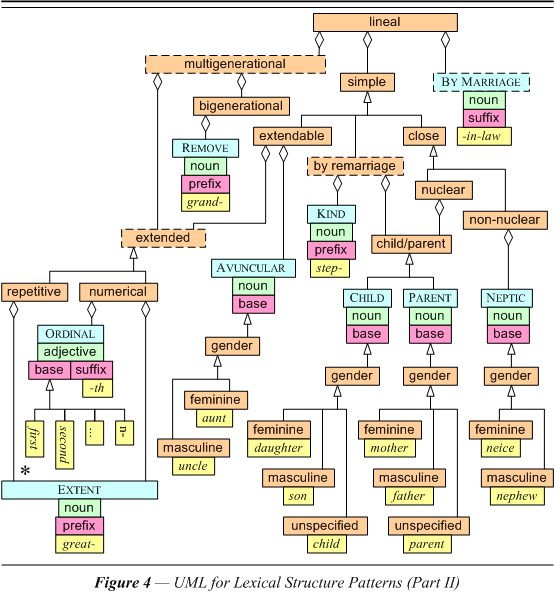
Part III — Bigenerational. The portion of the diagram included in figure 5 comprises the rule involving the sibling and cousin elements. The “kind” that precedes the noun is either a prefix (morphological) or an adjective (syntactic). Here we diagram such expressions as younger sister, oldest brother, younger step-brother, full sister, brother-german, youngest cousin, etc.
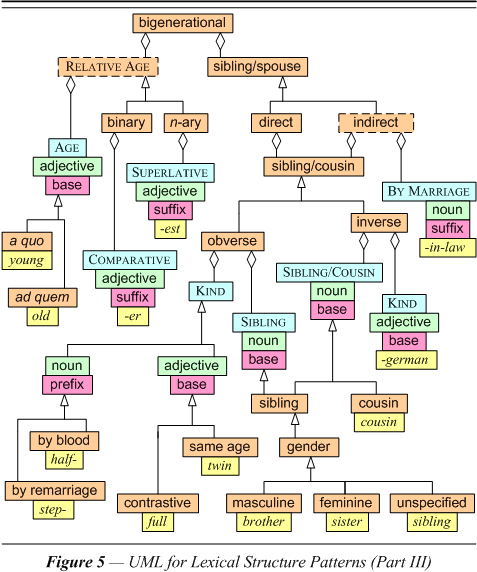
Part IV — Spousal. The modifiers of the spouse terms as included on figure 6 are all related to the temporal order of multiple families of procreation. Hence, we have first husband, third wife, last spouse, future husband, etc. There is hardly a difference in meaning between an ex-wife and a former wife.
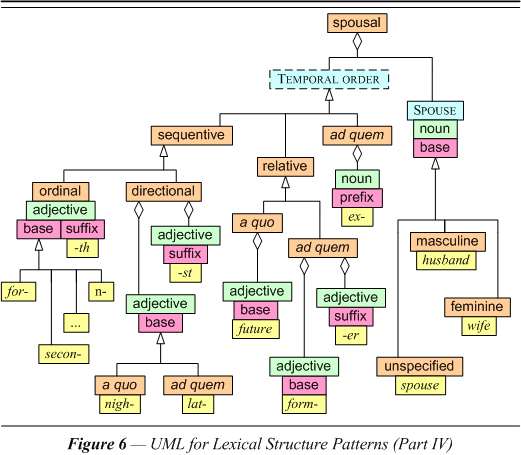
Part V — Descendent. The ordinal adjective on figure 7 is the same one as on figure 6. The relative age here is the same as the one on figure 5. Normalization would have put all three figures together. Here we describe such expressions as, oldest son, third daughter, second cousin, younger cousin, double cousin, third youngest child, etc.
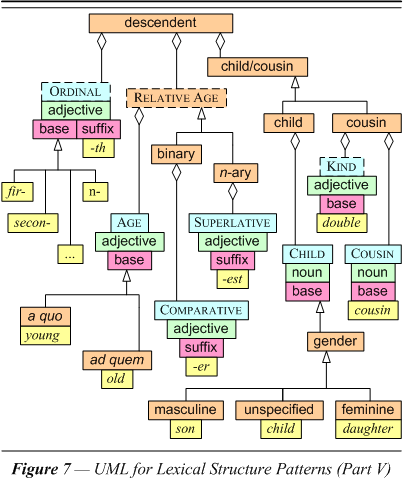
Linkage order. In the model the functional elements sit atop the others. The student may ask why it is not possible to place the linguistic terms on top. For example, examine the analysis of the term great-great-grandfather illustrated in figure 8.
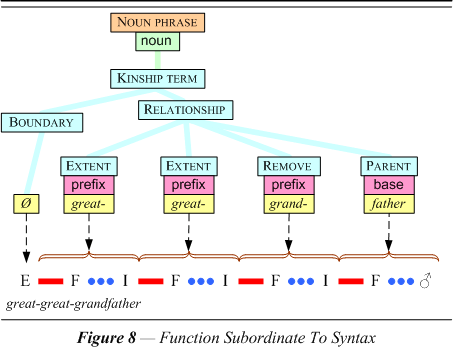
The figure has the syntactic elements above the functional. This is possible because the kinship term is a single noun. Now, see how the levels relate to each other when describing the four noun phrases in the synonymous term parent’s parent’s parent’s father diagramed in figure 9:

In this case the most natural order makes the syntactic level analyze the functional elements. In general this order must take precedence. However, there are cases, as the synonymous term in figure 10 illustrates, where the two co-exist at the same level. Here the noun phrase explicates the “relationship” but the noun phrase has an “ordinal” as an adjective part and its noun has other functional elements that help describe its morphemes.
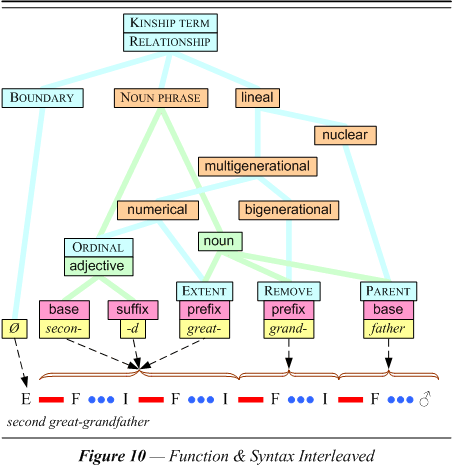
The focus of the next section is to explicate the dashed arrows in these last three diagrams. This is the relationship between the lexical items and their semantic representation.
